One of the privileges of being a United Nations spouse is, no matter what city you live in, one has the opportunity to interact with people from many different countries and share cultural experiences. This is one of the benefits I enjoy most as a member of the New York City branch of the UN spouse association.
In the last month, one of our Japanese members organized two wonderful and interesting workshops, one on the art of Ikebana and another on the intricacies of the Japanese Tea ceremony.
Both events were fun to participate in fascinating to learn about. Here is the wrap up on the Japanese tea ceremony workshop.
The flyer for our event described the art best: “The Japanese tea ceremony is a ceremonial way of preparing and drinking tea, also known as chanoyu, sadō, or chadō and is a choreographed art requiring many years of study to master. The tea is first prepared by the host, and then drunk by the guests. The tea is matcha green tea made of powdered tea leaves, and the manner is called otemae, the art of its performance. Zen Buddhism was a primary influence in the development of the Japanese tea ceremony, and the ceremony became a spiritual experience that embodies harmony, respect, purity and tranquility.”
The event was facilitated by students at the Keio Academy of New York and was lead by lovely woman who is a master and teacher of the Japanese tea ceremony. Students of Keio Academy of New York Tea Ceremony Club practice regularly during the school year, perform at school events and at events outside the school as well.
Upon arriving, we slipped off our shoes and pulled on clean white socks to respect the zen culture. We were also instructed not to wear jeans.
The teacher started us off with a slide show revealing a crash course in the fascinating history and traditions of the ceremony.
The first concept introduced was Ichigo Ichie which translates to “One opportunity. One encounter.” Meaning that the time you spend with people drinking tea together is unique and will never happen again the same way.
Sadō means “the way of tea” and refers to the Japanese Tea ceremony itself. Zen monks originally introduced tea to Japan from China by the priest Eisai in 1191. In the 12th century, a dose of Tea was used as medicine.
Up until the 15th century tea territory was primarily for the upper class and aristocrats. Also popular with rich Samari warriors, expensive Chinese tea bowls and utensils were coveted and collected.
In the 1500s Sen No Rikyu, son of a rich merchant, stripped the process down removing many luxurious elements of the surroundings and brought simplicity and a more Zen style to the tea ceremony.
The tea house is usually found in the back of the house in Japan as a free standing structure. There can also be a tea room inside the house. The stepping stones that lead to the tea house are significant. With each step, one is supposed leave something behind in order to enter into the tea house with a clear mind.
After Rikyu Sen’s influence, warriors had to leave their swords outside. The spaces became smaller and more appropriate for 6-8 people rather than a large party. The entrance was made very small as a social equalizer. Anyone entering the space, no matter what societal class they were from, would all have to stoop to the same level.
Inside the tea house there is a still and simple flower arrangement. To create the arrangement, one would typically use use a bud instead of a full flower. The idea is to imagine what the flower would look like and enjoy that experience. There is also a scroll on the wall with a message on it. Sometimes that scroll says Ichigo Ichie.
No politics or personal problems are allowed to be discussed during the tea ceremony. One should only discuss what is happening in the here and how in relation to the ceremony, the food and the tea. The entire ceremony takes 4-5 hours and spans the meal, dessert and then tea.
Dinner traditionally includes a rice dish, a soup from season ingredients. Sake is also taken with the meal. The main attraction is the dessert that comes after. The artistic sweets offered are often seasonal in shape and flavor. For example, they may resemble cherry blossoms or leaves or fireworks depending upon the time of year.
Sweets are served before tea to fill one’s mouth with sweet flavor to offset the bitter taste of tea. The strong thick green tea is served after dessert. In preparing the tea, it is whipped with a small bamboo whisk to aerate the matcha. This makes the tea foamy and less bitter. The matcha tea used in the ceremony is different than the variety that most of us use in baking.
After the slide show, there was a demonstration on the complicated ceremonious way the tea is prepared and served using a volunteer from out group. We were shown how to properly receive sweets and the tea, express gratitude, drink the tea, admire the bowl, slurp and when to bow.
We were all instructed to slurp the last sip to make sure all is gone and no residue drops on the tatami mat. Slurping also lets the host know when you are done so the host can make the next cup of tea.
Then it was our turn. We were divided into two groups. One to serve the tea and one to receive.
Half of us positioned ourselves on the tatami mats and the other half lined up. One by one we were guided by the students on how to walk on the mats (don’t step on a crack!), to step or kneel with the proper leg (right or left) and present the tea.
After being served and consuming a traditional Japanese sweet (cake with sweet bean paste filling), we were ready to drink tea receiving the tea with one hand, the other is used to wrap around the bowl in a way that expresses gratitude to the host.
Turning the bowl two times clockwise before drinking. Then drink, slurp the last bit and admire the pattern in the bowl and place the bowl on the mat.The participants then switched roles and performed opposite tea ceremony duties so everyone got to experience both roles as the giver and receivers of tea. Everyone left with an entirely new understanding of the Japanese art of tea and many of us with the thirst to know more.
This workshop was so enlightening, I will never look at a cup of tea the same again.

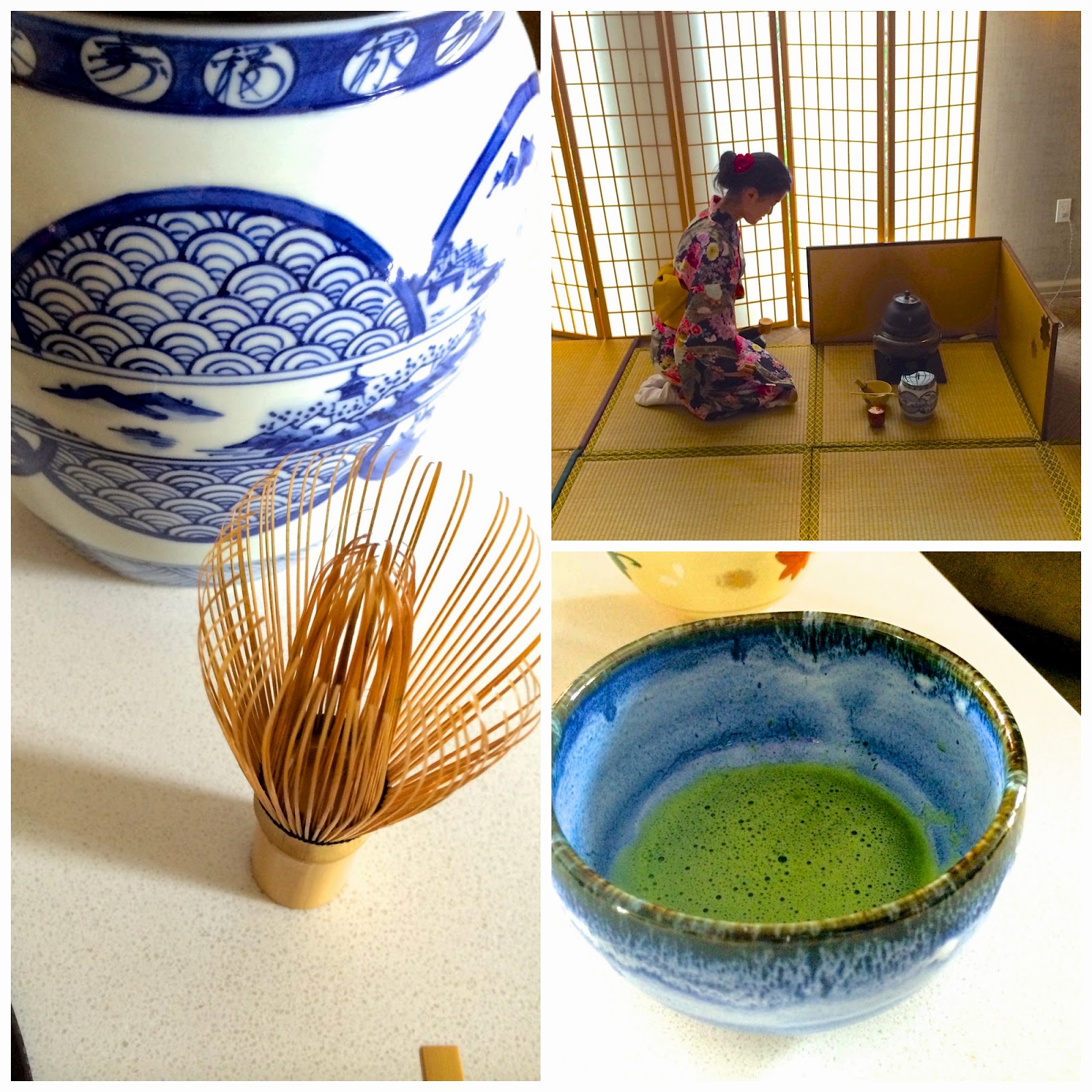
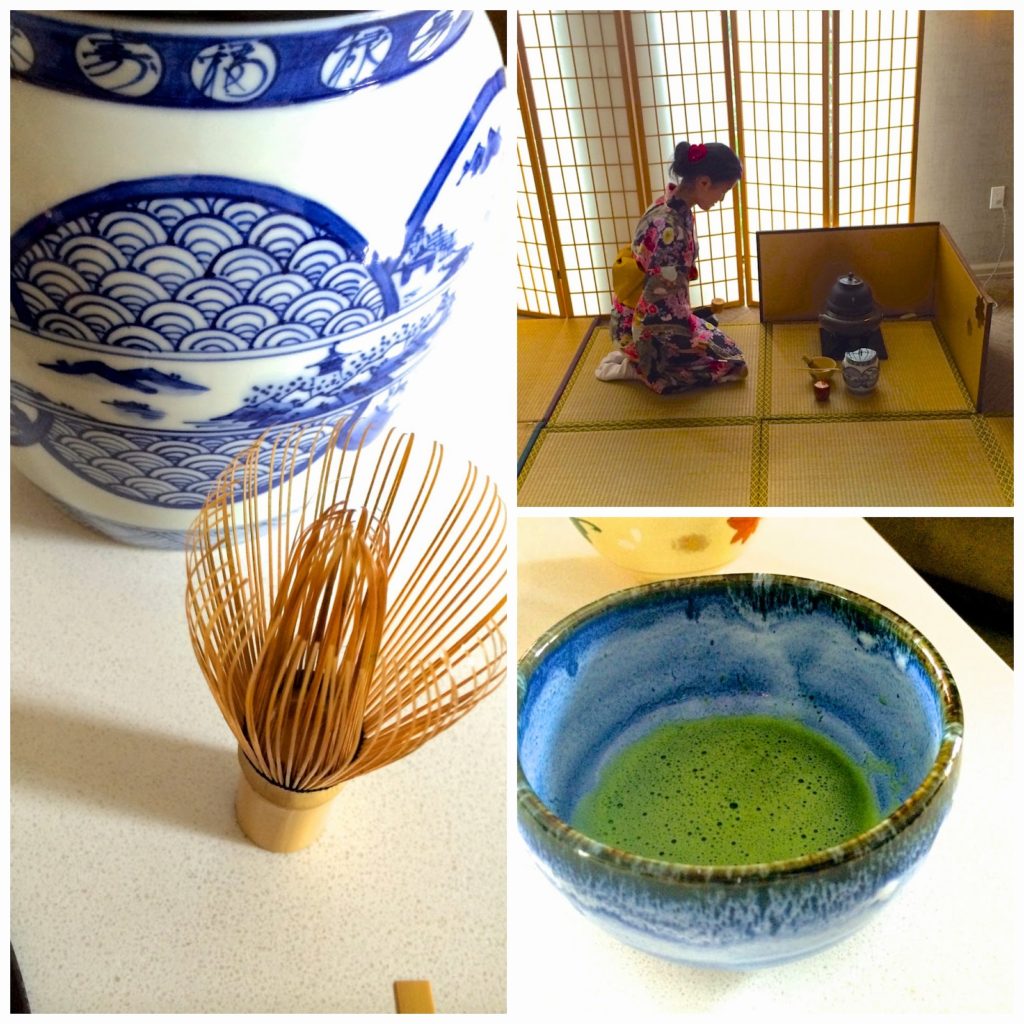

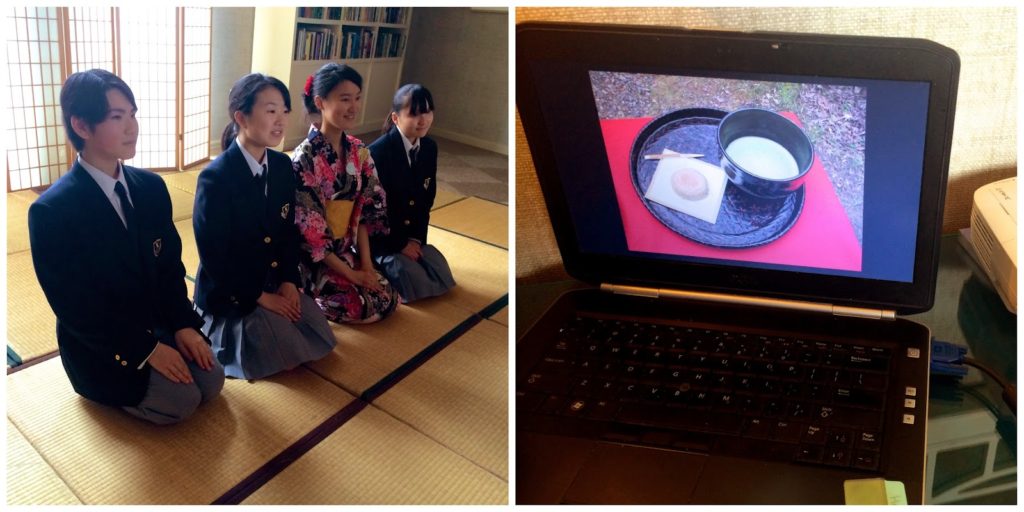
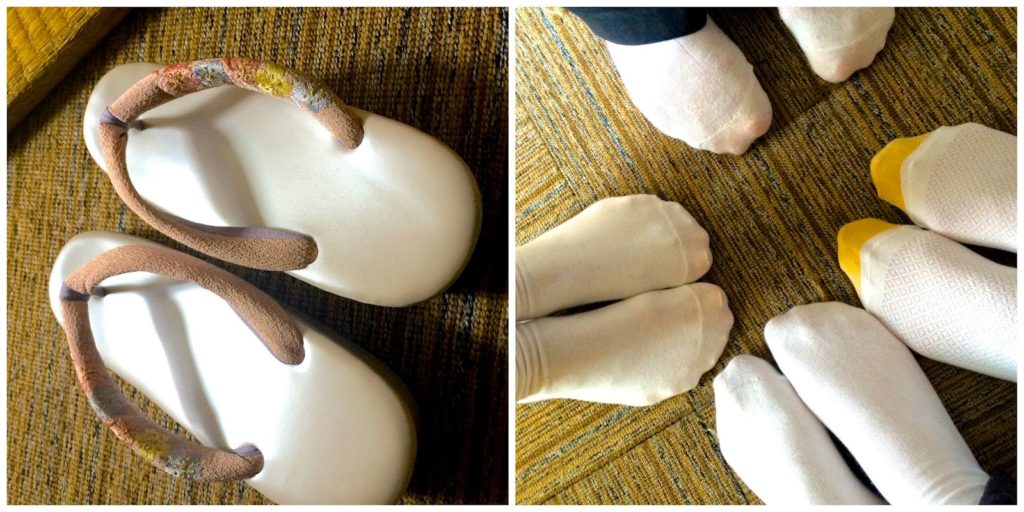
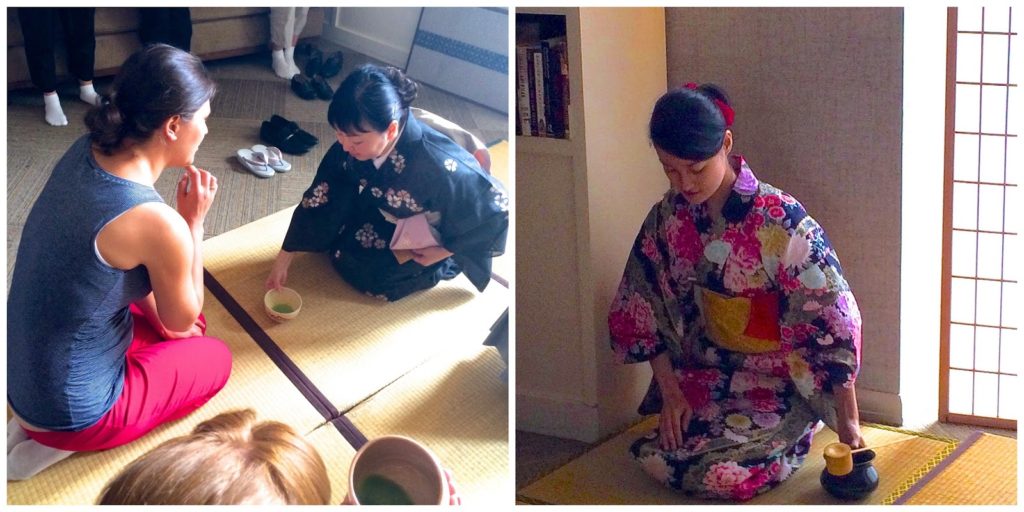
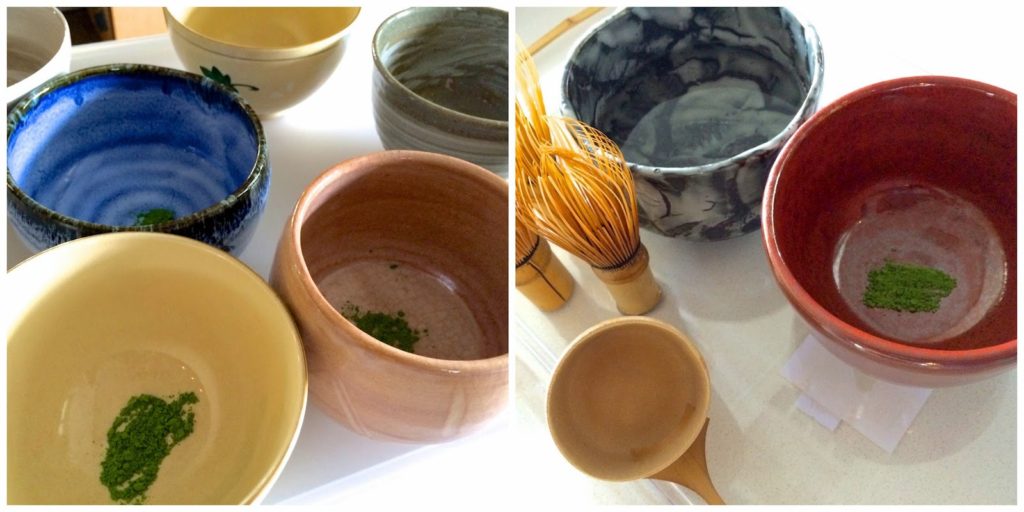

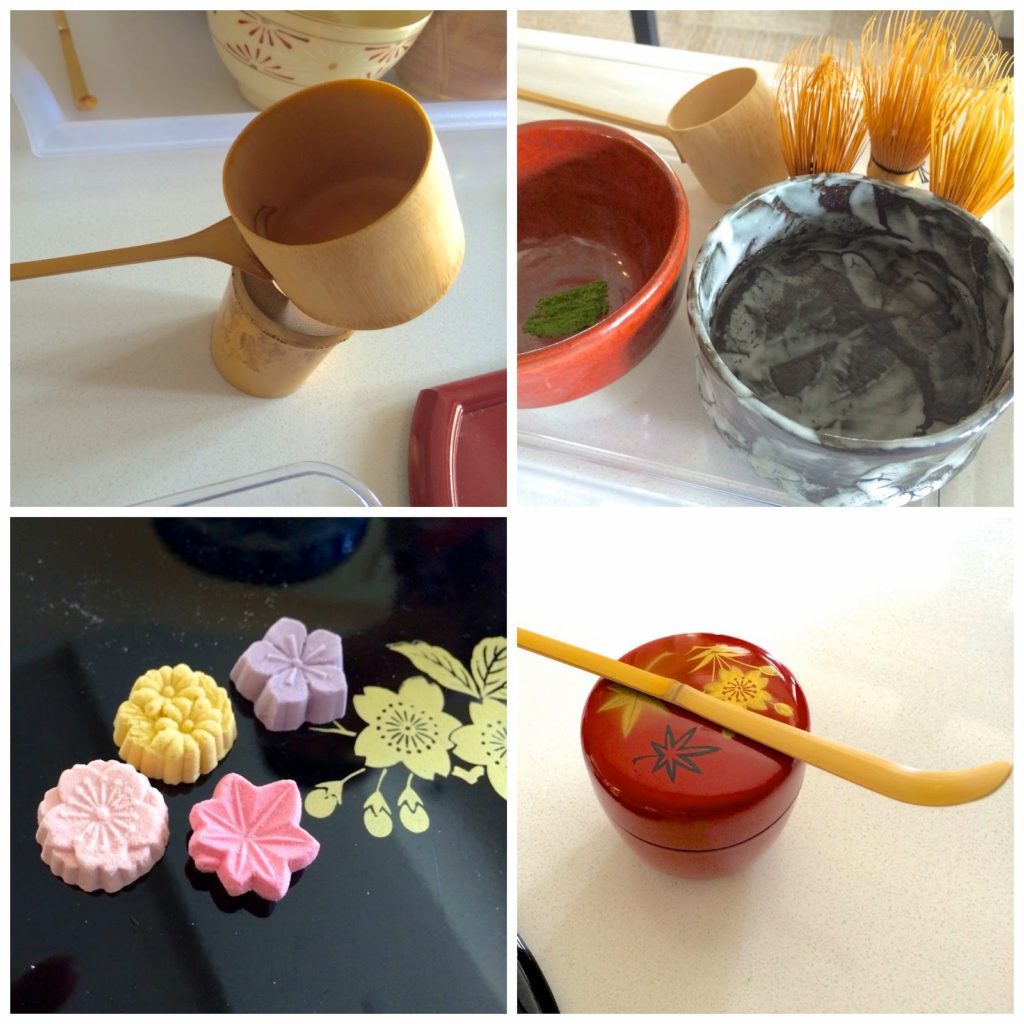



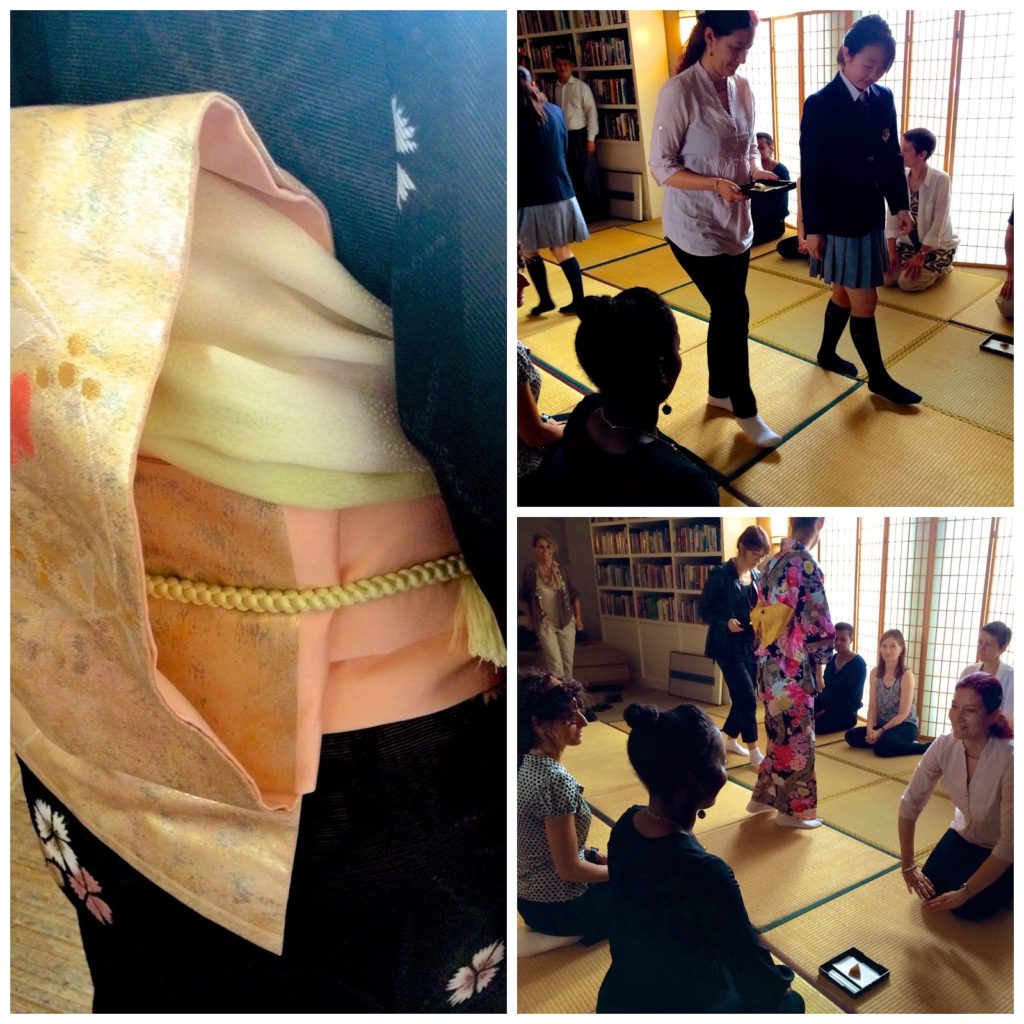

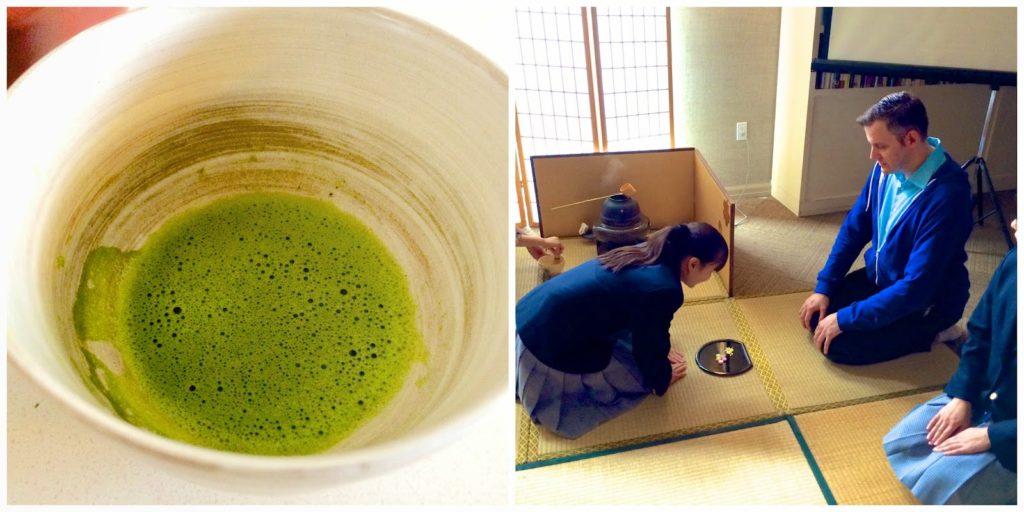
1 comment
Lora, thank you for sharing this! I loved reading about your experience. I've loved using matcha in sweets for quite some time now, but recently started drinking a ceremonial grade in the mornings before coffee. Also, I've been obsessed with finding a recipe book on wagashi – those pretty sweets that are shaped like flowers and blossoms. The only instructional books I can find are in Japanese. I'd love to learn to make them!